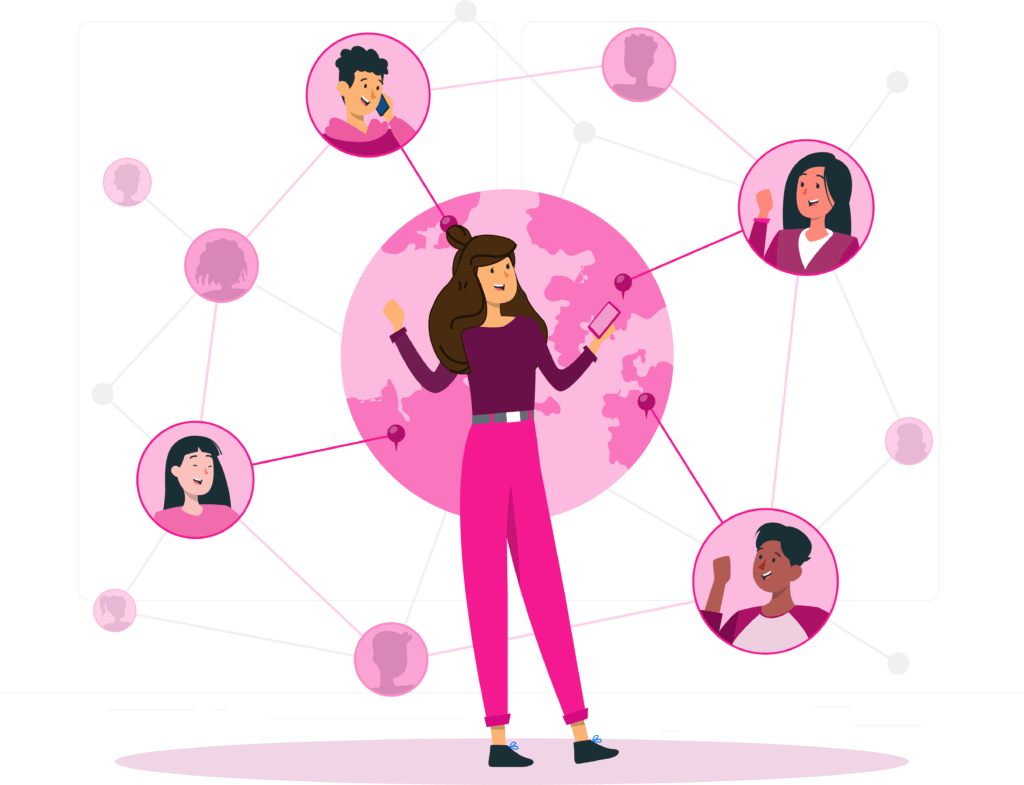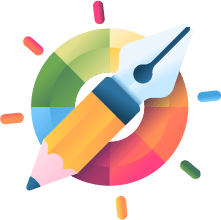Introduction
In today’s digital era, graphic design plays a crucial role in creating visually appealing and impactful content design for different purposes and mediums. Graphic designers are the creative geniuses behind logos, websites, advertisements, and much more. If you are highly interested in technology, design and art then the field of graphic designing might suit your interest. This article explores the world of graphic design jobs, including the skills required, job opportunities, educational paths, salary potential, and future trends.
What is Graphic Designing?
Graphic designing is a dynamic field that involves the creation of visual content to convey a message or evoke a specific response. It encompasses various elements such as typography, colors, images, and layouts to communicate ideas effectively. Graphic designers create different brand assets like logos, posters, brochures, flyers, wesbites and other printing and digital material by using their technical and artistic skills.
Importance of Graphic Designers
Graphic designers play a crucial role in shaping the visual identity of businesses and organizations. They help create a strong brand image by designing compelling and memorable visuals that resonate with the target audience. Good design not only attracts attention but also enhances user experience, increases brand recognition, and influences purchasing decisions. In this competitive environment, businesses are very much dependent upon graphic designers to give them a competitive edge over their competitors and leave a long-lasting impact on customers using their designed content.
Skills Required for Graphic Design Jobs
To become a successful graphic designer, one requires in-depth knowledge of design principles, the latest design trends, technical knowledge of professional software, and good communication skills. Following are some important skills required for a graphic designer:
- Creativity and artistic ability to develop unique and visually appealing designs.
- Proficiency in design software such as Adobe Creative Suite (Photoshop, Illustrator, InDesign) or other industry-standard tools.
- Knowledge of typography, color theory, and composition to create visually balanced designs.
- Attention to detail and ability to work under tight deadlines.
- Strong communication and collaboration skills to understand clients’ requirements and effectively present design concepts.
Job Opportunities for Graphic Designers
The demand for graphic designers continues to grow as businesses recognize the importance of effective visual communication. Graphic designers can find employment opportunities in various industries, including:
- Advertising agencies: Creating visually engaging advertisements and marketing materials.
- Web design companies: Designing user-friendly and aesthetically pleasing websites.
- Publishing houses: Designing book covers, layouts, and illustrations.
- Corporate marketing departments: Developing brand identity, logos, and promotional materials.
- Media and entertainment industry: Designing graphics for films, TV shows, and digital media.
How to Become a Graphic Designer?
For Becoming a graphic designer, one requires technical education of graphic design, practical experience in the field, and knowledge of latest trends. Here are some steps to kickstart your graphic design career:
Educational Requirements
While formal education is not always a requirement, earning a degree or diploma in graphic design can provide a strong foundation and increase job prospects. Many universities, colleges, and specialized design schools offer programs that teach design principles, software skills, and provide opportunities for portfolio development.
Developing a Portfolio
Building a strong portfolio is essential for showcasing your skills and attracting potential employers or clients. Include a variety of projects that highlight your versatility and creativity. Consider working on freelance projects, internships, or personal design challenges to gain hands-on experience and diversify your portfolio.
Mastering Design Software
Proficiency in design software is crucial for graphic designers. Invest time in learning industry-standard tools such as Adobe Creative Suite, which includes Photoshop, Illustrator, and InDesign. Familiarize yourself with their features and functionalities to create professional-grade designs efficiently.
Networking and Building Connections
Networking plays a vital role in the graphic design industry. An interested person must attend design conferences, workshops, and events to meet fellow designers, industry professionals, and potential clients. Join online design communities and engage in conversations to expand your network and stay updated with industry trends.
Freelancing vs. Full-Time Employment
Graphic designers have the flexibility to work as freelancers or secure full-time employment. Freelancing allows you to freely choose clients, projects, and work hours, providing a higher level of independence and creative freedom. However, freelancing comes with the responsibility of managing your own business, finding clients, and handling administrative tasks.
Meanwhile, full-time jobs provides stability and consistency of income and the opportunity to work in an office environment. It provides valuable experience and the chance to work on larger projects with established companies. One must consider his/her personal preferences and career goals when deciding between freelancing and full-time employment.
Salary Potential for Graphic Designers
The salary of a graphic designer depends on his/her work experiences, niche, location, industry and profile formation. Entry-level graphic designers typically earn a starting salary, but as experience and expertise grow, so does earning potential.
Challenges and Rewards in Graphic Designing
Some common challenges include tight deadlines, demanding clients, and the need to continuously adapt to new design trends and technologies. However, the rewards are equally satisfying. Graphic designers uses their own and their imaginations and visions into reality, make positive image of the business through their designs and plays a vital role in the success of the businesses.
Future Trends in Graphic Design Jobs
Here are some future trends that are shaping the industry:
- Responsive and mobile-friendly designs: With the increasing use of mobile devices, designers need to create designs that adapt seamlessly to different screen sizes and resolutions.
- User experience (UX) design: Designers are focusing more on creating designs that provide intuitive and enjoyable user experiences, enhancing usability and engagement.
- Motion graphics: Dynamic and animated visuals are becoming more popular, especially in digital advertising and social media campaigns.
- Sustainable design: There is a growing demand for environmentally conscious design solutions, incorporating sustainable materials and practices.
- Augmented reality (AR) and virtual reality (VR): Designers are exploring the possibilities of AR and VR to create immersive and interactive experiences.
Conclusion
Graphic design jobs offer an exciting and fulfilling career path for those with a passion for creativity and visual communication. By developing the necessary skills, building a strong portfolio, and staying updated with industry trends, you can position yourself for success in this competitive field. There is a high level of growth opportunities in the field of graphic design regardless, a graphic designer wants to work as a freelancer or pursue it as a full-time job.
If you are looking for tips to become a successful freelancer on Upwork, then click here
FAQs
Q1: Does graphic designing degree required to become a graphic designer? A1: While a degree is not always required, it can provide a solid foundation and increase job prospects. However, building a strong portfolio and developing essential skills are equally important.
Q2: What software do graphic designers use? A2: Graphic designers often use professional softwares such as Adobe Photoshop, Adobe Illustrator, and Adobe InDesign. Some designers use Canva as well for designing. All of these softwares are top trending in the industry and offer a wide range of features for design projects.
Q3: How can I improve my design skills? A3: Improving design skills involves continuous learning and practice. Experiment with different design styles, explore online tutorials and resources, and seek feedback from peers and professionals in the field.
Q4: Is graphic design a freelance-friendly career? A4: Yes, graphic design is well-suited for freelancing. Many designers enjoy the freedom and flexibility of choosing their clients and projects, but freelancing also requires self-promotion, client management, and business skills.
Q5: What is the future outlook for graphic design jobs? A5: The demand for graphic designers is expected to grow as businesses increasingly rely on visual communication to engage with their audiences. AR, VR, and motion graphics are some emerging skills that offer new opportunities for designers to improve their skills.





